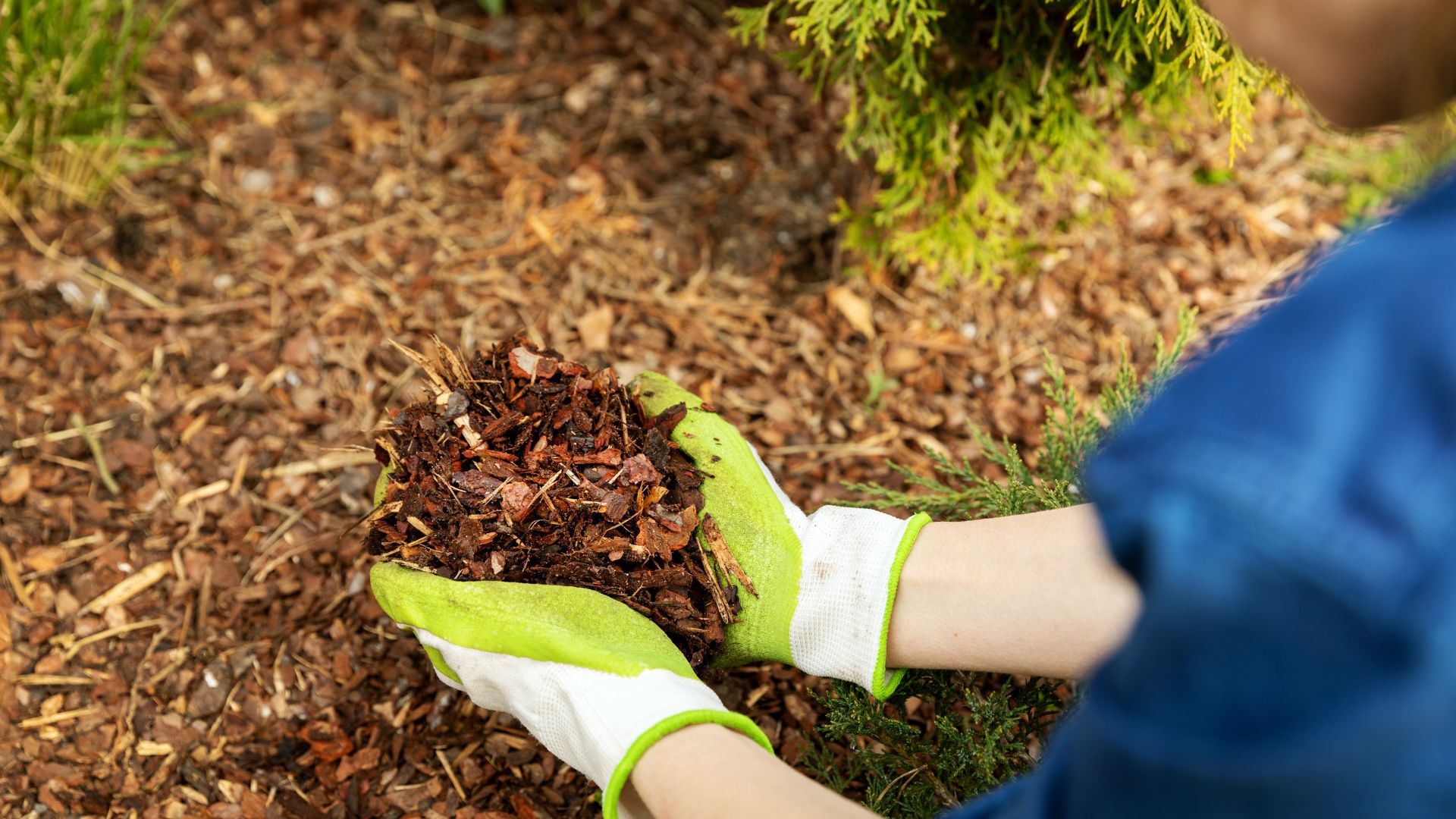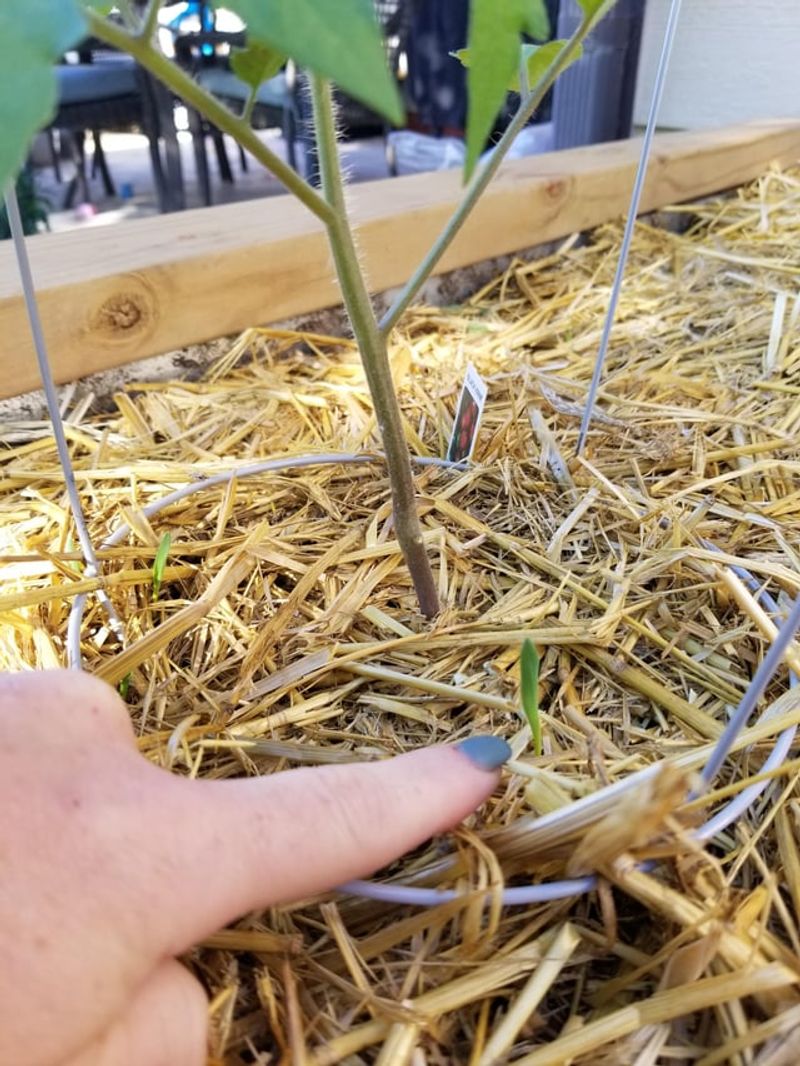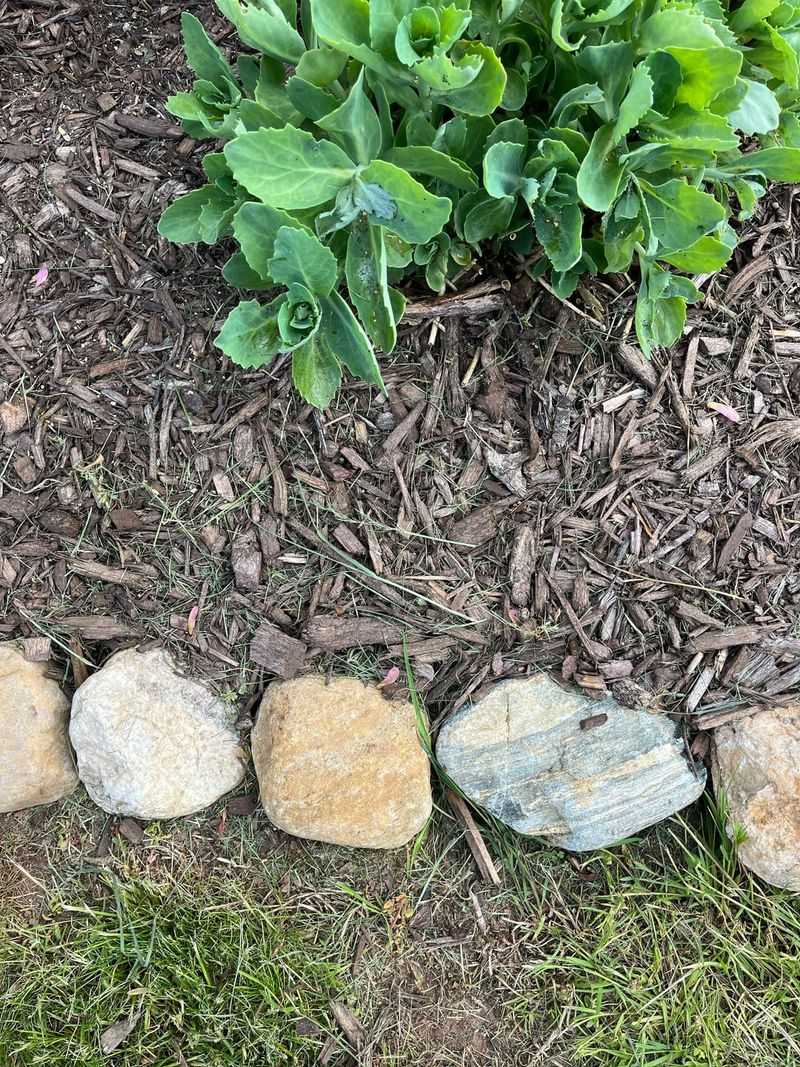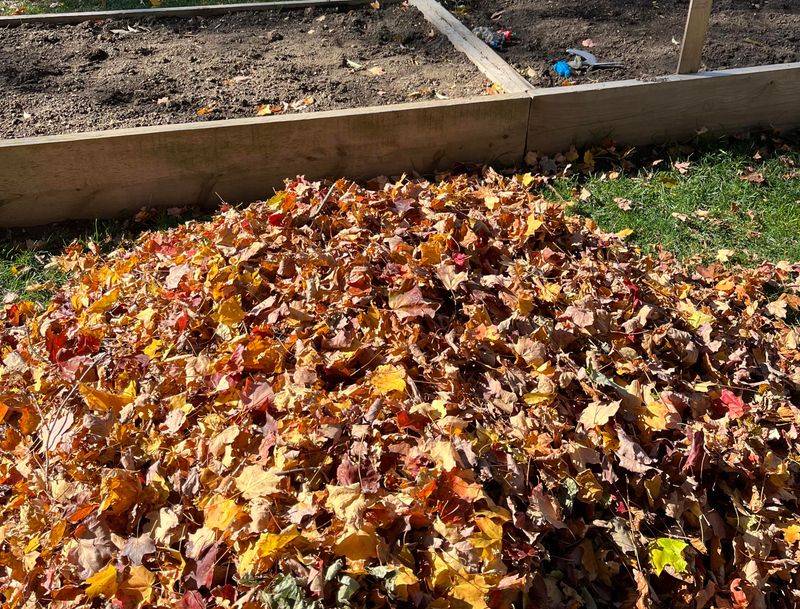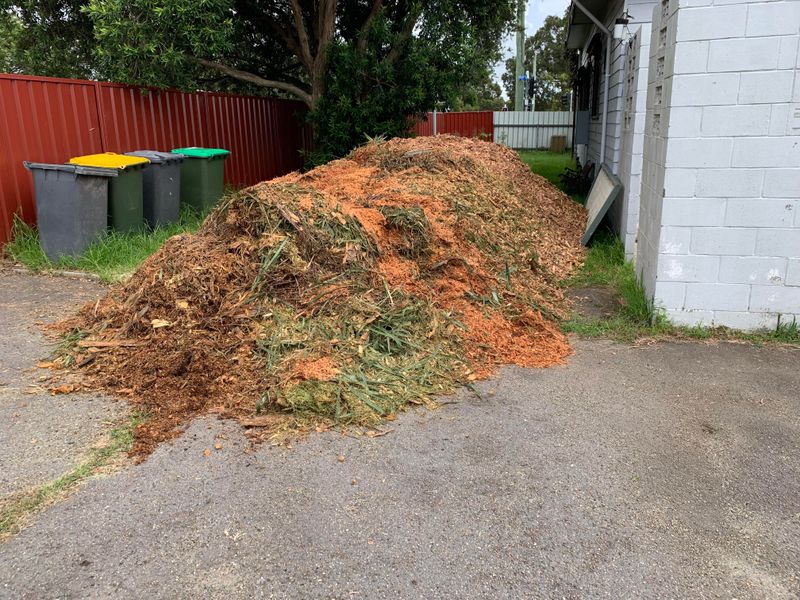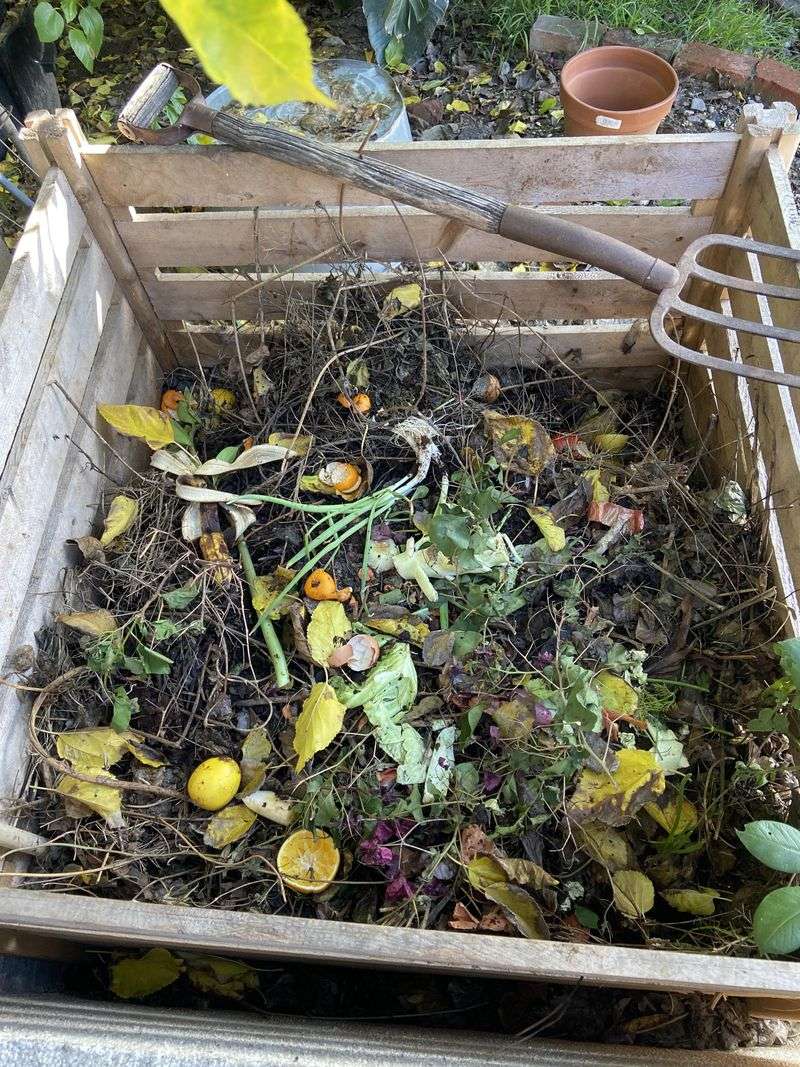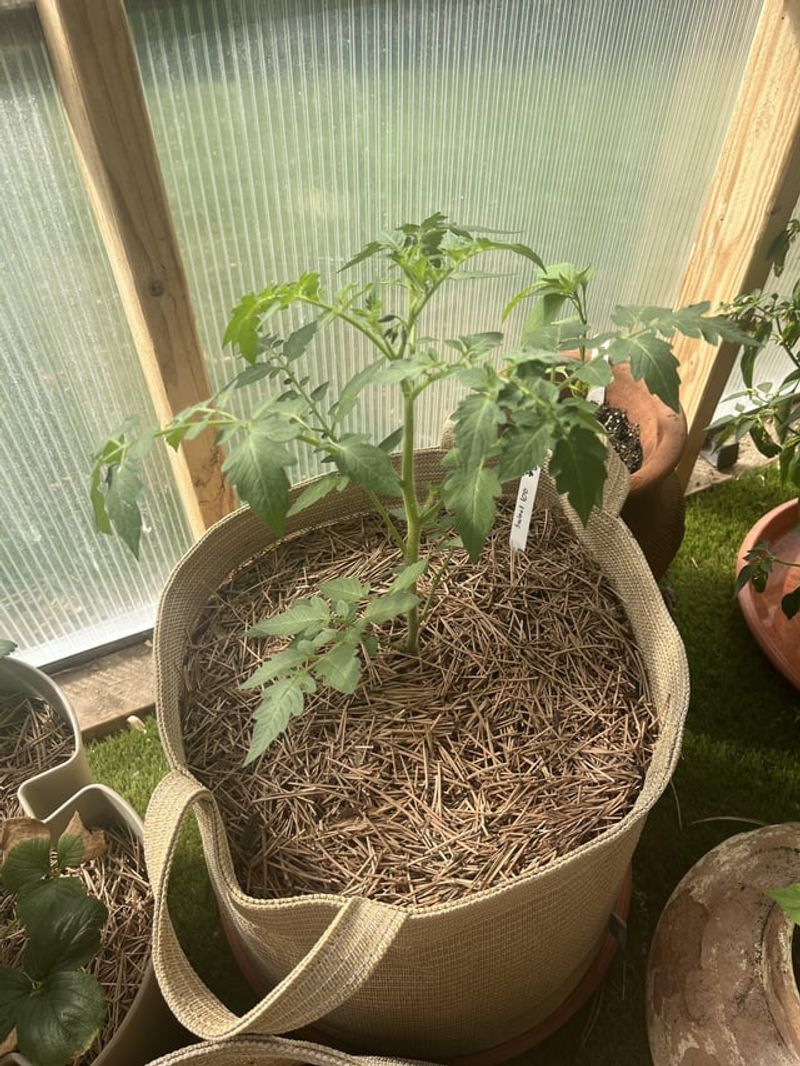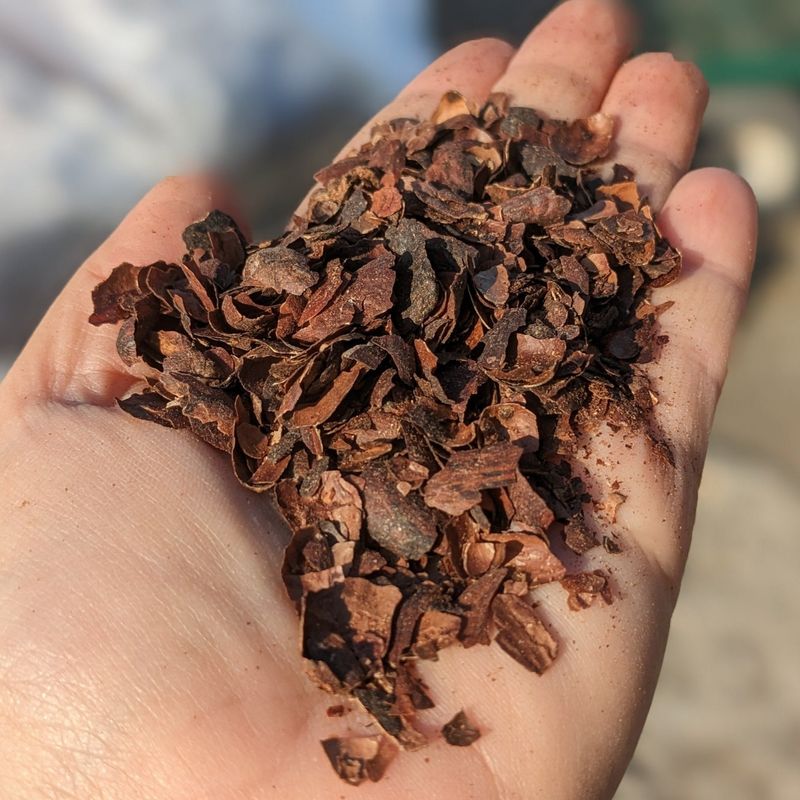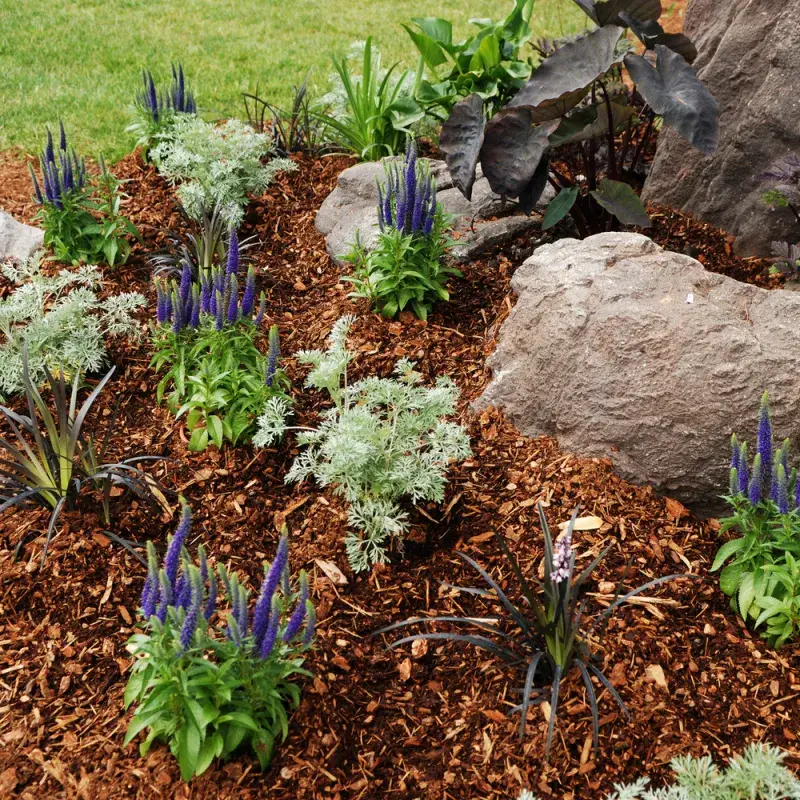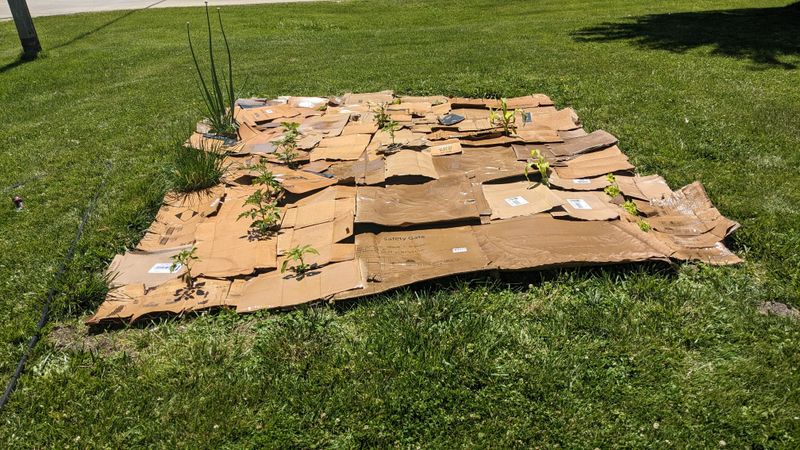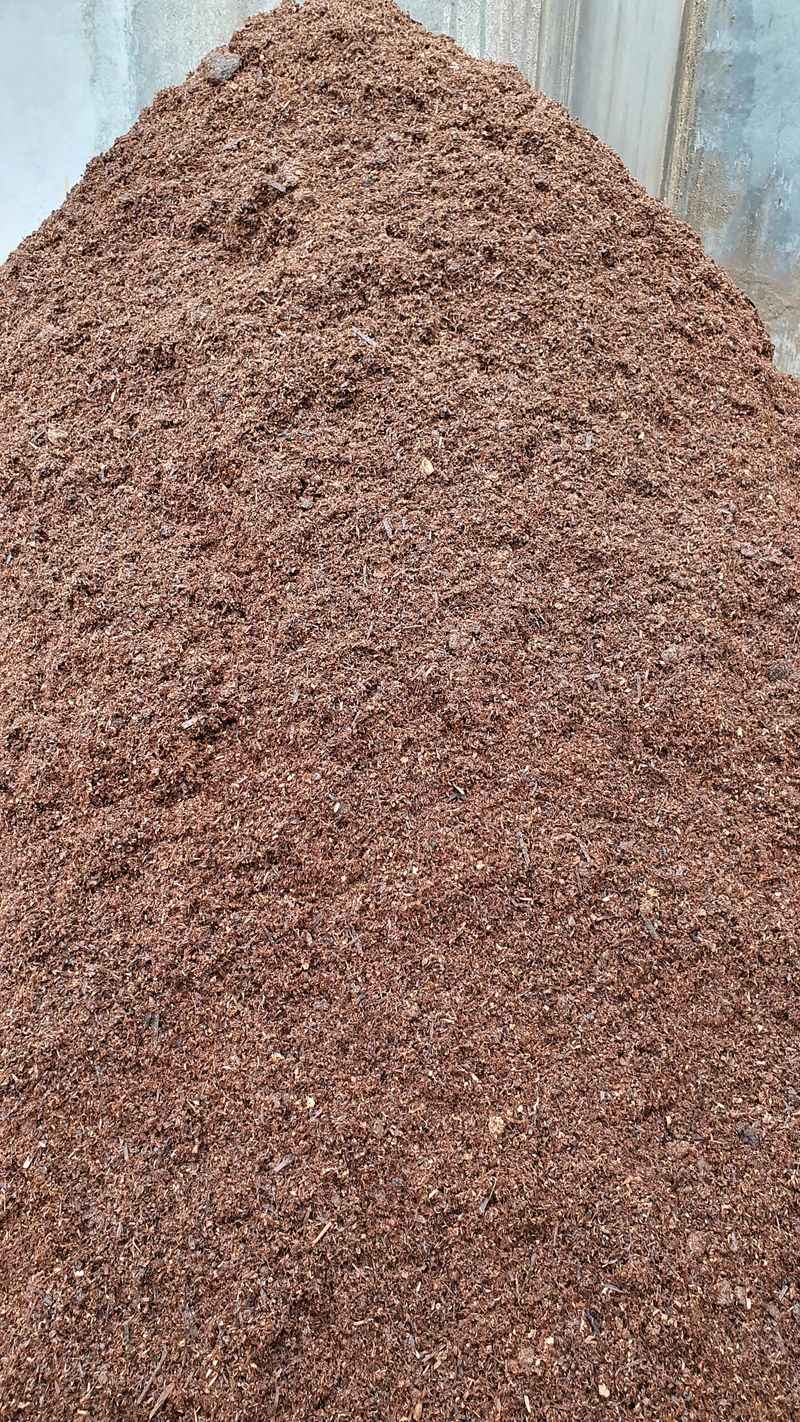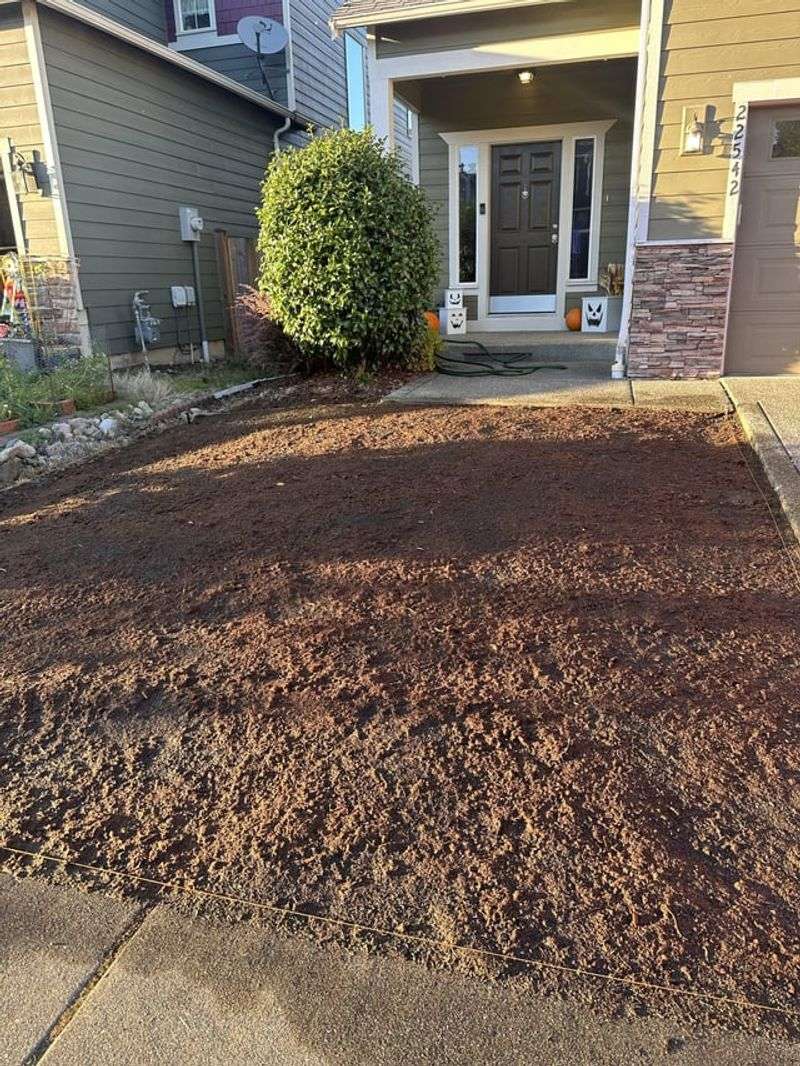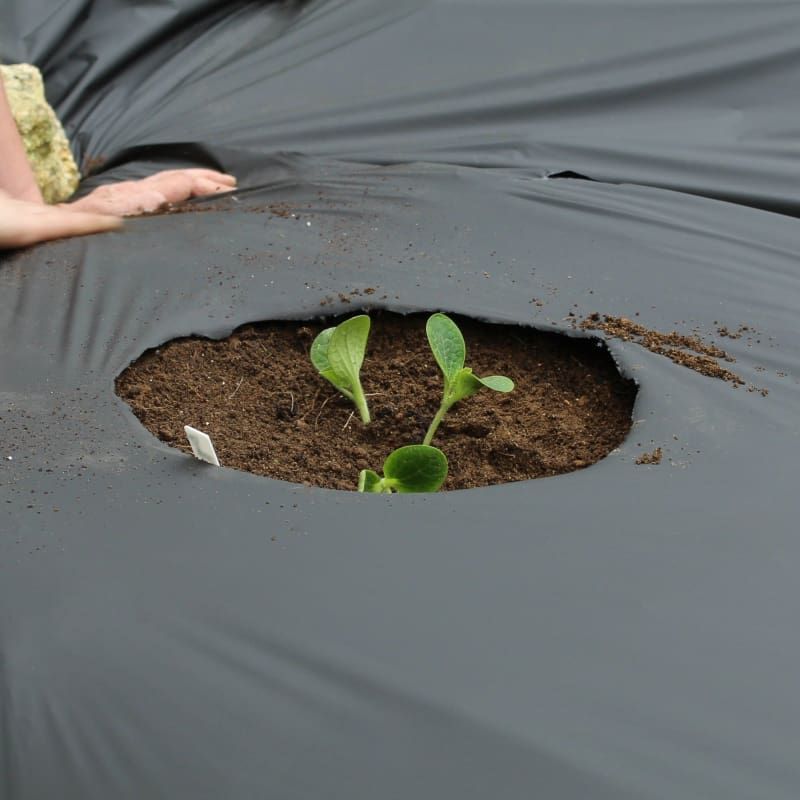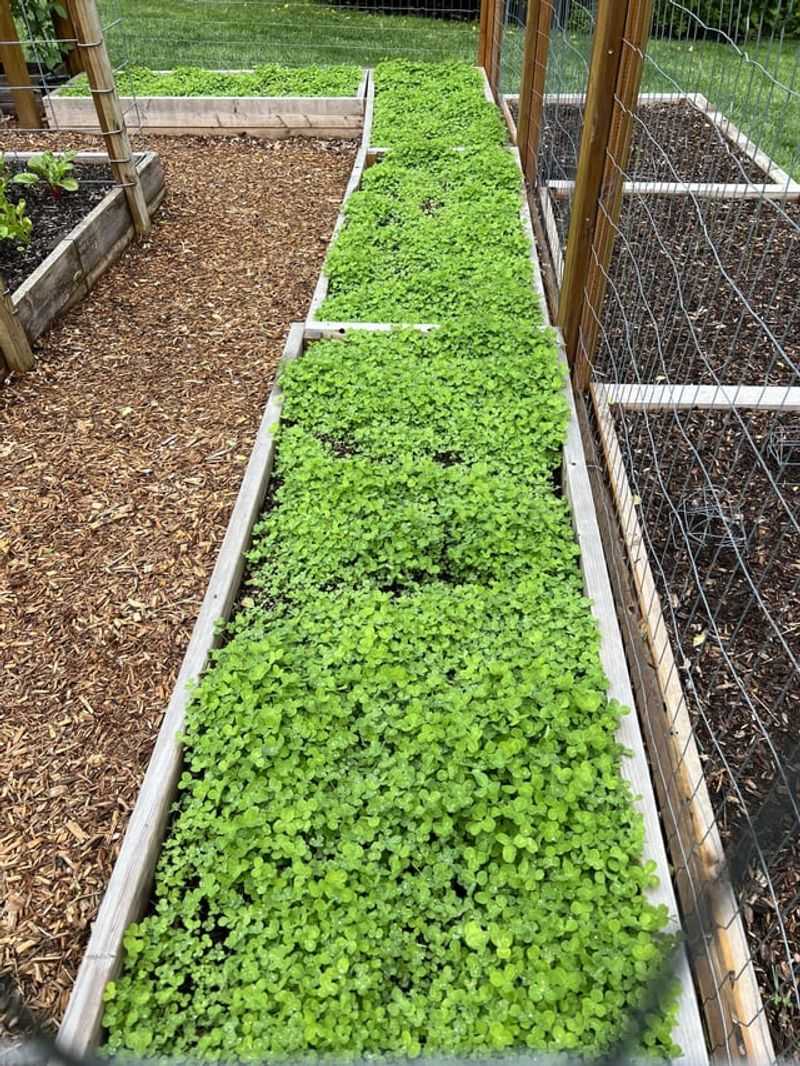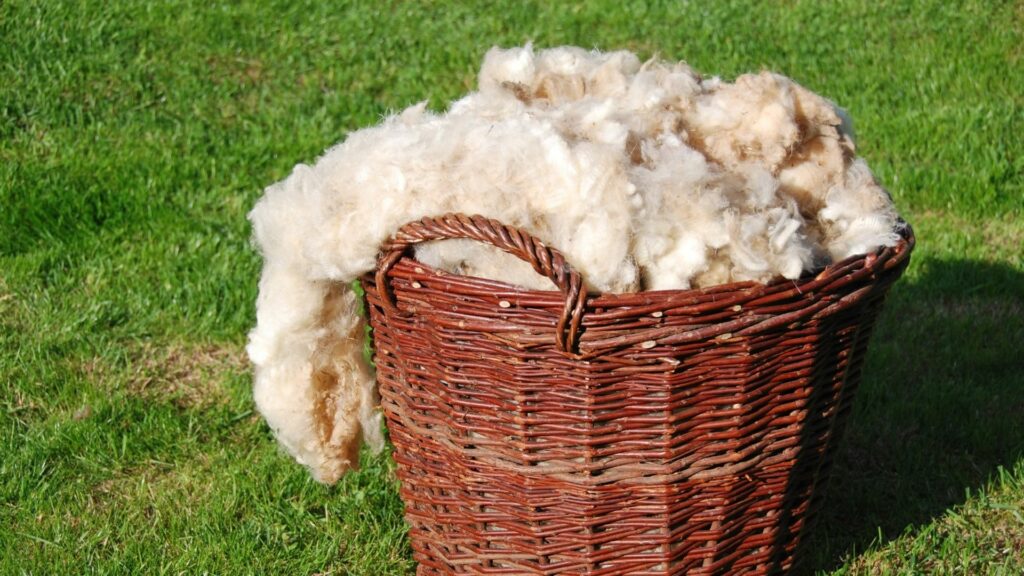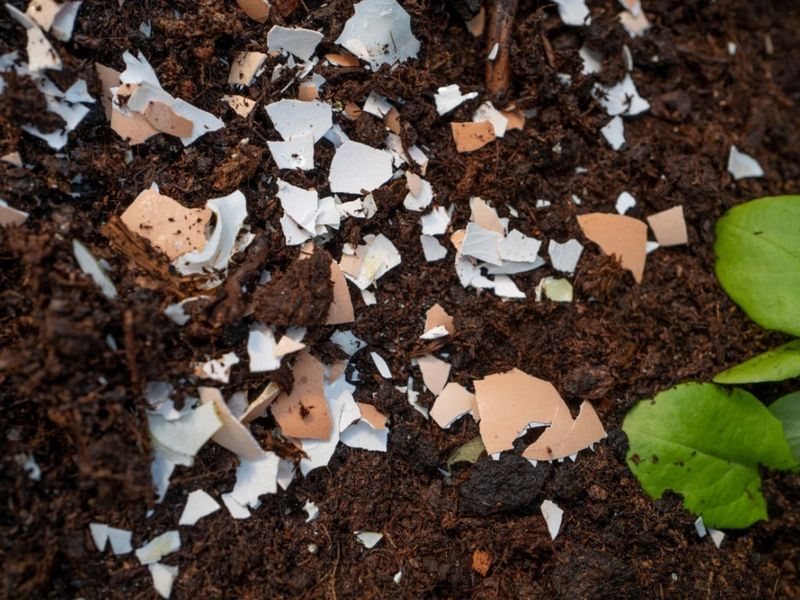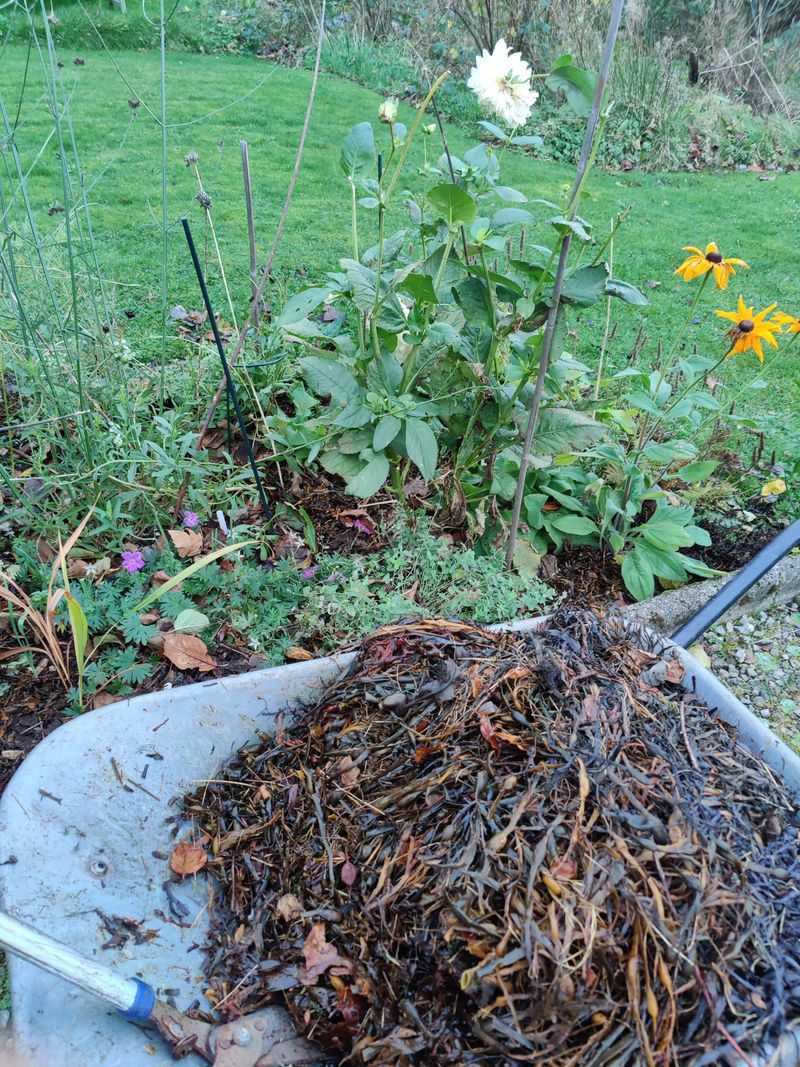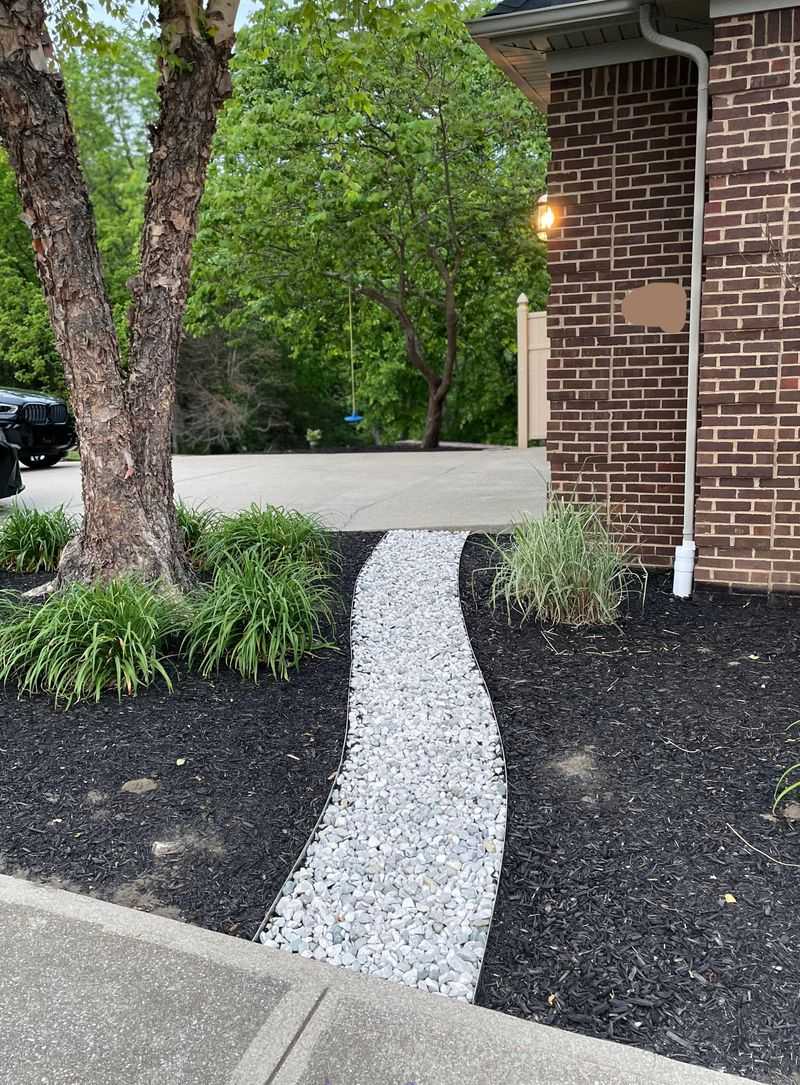The right mulch is like a secret ingredient for a thriving veggie garden. It keeps the soil happy, the weeds away, and your plants growing strong. I’ve tried a few (okay, more than a few), and trust me, the difference is incredible!
Whether you’re a laid-back gardener or someone who loves to experiment, these mulch options will help you create the healthiest, most productive garden yet. Let’s find the perfect match for your plants!
And who knows? You might just discover your new go-to gardening hack in the process.
1. Straw
Have you ever found yourself battling weeds while trying to keep moisture locked in? Straw might be your new best friend. This light, airy mulch does wonders in retaining moisture and keeping those pesky weeds at bay.
Why not give it a try and see the difference it makes in your vegetable patch? Plus, it decomposes slowly, providing ongoing soil benefits. Straw is particularly great for large gardens, allowing easy access and maintenance between rows. It’s a practical choice that promises visible results in no time.
2. Grass Clippings
Ever wondered what to do with those piles of grass clippings after mowing your lawn? They’re an excellent mulch option—free and nutrient-rich! Spread them around your veggies, and they’ll gradually decompose, feeding your soil with essential nutrients.
Plus, it’s a great way to recycle and reduce waste! Just be sure to use untreated and disease-free clippings to avoid any unwanted surprises. Grass clippings work best when applied in thin layers to prevent matting and potential mold issues. It’s an eco-friendly choice that benefits your garden and the environment!
3. Shredded Leaves
Shredded leaves are akin to nature’s blanket for your soil, providing warmth and improving structure over time. As they break down, they enhance the soil’s richness, creating a beautiful environment for your vegetables.
I remember the delightful crunch underfoot as I spread them, knowing each leaf was a step towards healthier soil. Who knew such a simple act could bring about such significant benefits? Keep in mind, they decompose more quickly when shredded, making them a perfect fall project. Let your garden bask under this layer of natural goodness!
4. Wood Chips
Who doesn’t love a mulch that lasts? Wood chips are your go-to for durability and effectiveness. They’re perfect for pathways and between vegetable beds, creating a neat and tidy look. As they break down, they add organic matter back into the soil, which is a win-win!
Just imagine strolling through your garden on a bed of wood chips, feeling the crunch beneath your feet. Remember, they’re best used in areas that won’t be tilled, ensuring long-lasting benefits. This mulch option keeps your garden looking sharp and working hard.
5. Compost
Here’s a question: What if your mulch could also feed the soil? Compost does precisely that! Rich in nutrients, it enhances soil quality while suppressing weeds. I often wonder why more people don’t embrace this dual-purpose gem.
It’s like giving your garden a buffet of nutrients while keeping it neat and tidy. Compost is incredibly versatile, working well with most vegetables. Just ensure it’s well-aged to prevent any unwanted pests. It’s a simple, effective way to boost your garden’s productivity while maintaining soil health.
6. Pine Needles
If you have acid-loving crops, pine needles are a fantastic mulch choice. They offer excellent insulation and help maintain soil acidity, which is perfect for crops like tomatoes and blueberries. Plus, they’re lightweight and easy to spread!
I’ve always thought of pine needles as nature’s way of giving us a helping hand in the garden. Just picture your acid-loving veggies thriving under a cozy layer of pine needles. Be mindful to use them in moderation to avoid overly acidic soil. A beautiful, practical solution for specific garden needs!
7. Hay
I remember the first time I used hay in my garden—it’s like wrapping your veggies in a warm, protective blanket. Hay provides excellent insulation and weed suppression, making it a favorite among gardeners. It’s particularly effective during colder months, keeping the soil warm and ready for planting.
However, it’s essential to ensure that the hay is seed-free to prevent unwanted growth. It’s a garden where your plants are protected and thriving, thanks to this simple yet effective mulch. It’s a choice that offers both protection and productivity!
8. Cocoa Hulls
Cocoa hulls bring an aesthetic touch to your garden with their rich color and pleasant aroma. But beware, they can be harmful to pets, so use them with caution. They provide nutrients and improve soil structure as they break down, making them a great choice for gardens that need a little extra visual appeal.
Think of it as giving your garden a delightful scent and a nutrient boost at the same time! As they decompose, cocoa hulls offer a slow-release of nutrients, making them a long-term investment in garden health.
9. Bark Mulch
For those who prefer a mulch that’s a slow burner, bark mulch is a perfect pick. It decomposes slowly, making it ideal for perennials and pathways. There’s something satisfying about the rustic look it brings to a garden. Your garden evolving with each season, with bark mulch quietly supporting it. Amazing, right?
It provides excellent weed control and moisture retention, making it a staple for many gardeners. Just ensure that it’s free of any contaminants that could affect plant growth. A solid choice for those seeking longevity and aesthetics.
10. Cardboard Or Newspaper
Have you ever considered recycling while gardening? Cardboard and newspaper are budget-friendly options that excel in weed control. They break down quickly, enriching the soil beneath them. Use your everyday items to enhance your garden’s productivity!
These materials are particularly effective when layered and covered with another type of mulch, like straw or wood chips, to keep them in place. It’s a sustainable choice that makes a big impact without a hefty price tag. Just be cautious to avoid glossy papers that may contain harmful chemicals.
11. Sawdust
Looking for an unusual mulch that’s also effective? Aged sawdust might be the answer. It’s an excellent choice for those who can let it sit and age to avoid nitrogen depletion. It’s essential to balance it with nitrogen-rich fertilizers to prevent nutrient deficiencies.
This mulch choice works best in areas where soil needs loosening, offering improved drainage and weed suppression. Have you ever considered giving sawdust a try in your garden? It’s an unexpected yet rewarding choice!
12. Peat Moss
For gardeners dealing with sandy soils, peat moss is a game-changer. It helps retain moisture, making sandy soils more plant-friendly. Transform your garden’s soil into a more hospitable environment for your veggies! While it’s a bit on the spendy side, the benefits often outweigh the cost.
Peat moss improves soil texture, offering better water retention and root support. Just handle it with care as harvesting peat moss can impact ecosystems. It’s a choice that brings both challenges and benefits to the table.
13. Black Plastic
Have you ever wanted to give your heat-loving crops an extra boost? Black plastic mulch might be the perfect solution. I remember the thrill of seeing my tomatoes thrive under its warm embrace.
This mulch retains heat and suppresses weeds, making it ideal for crops like peppers and eggplants. However, it’s vital to ensure good drainage to prevent water pooling. It’s a choice that offers both efficiency and enhanced growth potential for your garden.
14. Landscape Fabric
Landscape fabric offers excellent weed control but requires proper installation to be effective. It’s a durable option that can last several seasons, making it a favorite for long-term projects. This becomes a garden where weeds are no longer a constant battle—landscape fabric can make that a reality.
However, it’s essential to pin it down securely and cut holes for your plants to prevent water pooling. This mulch choice provides a neat appearance while efficiently managing weeds. It’s a solid investment for the meticulous gardener.
15. Living Mulch (Like Clover)
Consider using living mulch like clover to fix nitrogen and prevent soil erosion. It’s an innovative way to keep your soil healthy and your garden looking good! Visualize a garden where the mulch itself is alive and thriving, contributing to soil fertility.
Clover not only suppresses weeds but also enriches the soil with nitrogen, making it a multifunctional choice. Be mindful to manage its growth to prevent competition with your veggies. It’s a living, breathing choice that truly supports your garden’s ecosystem.
16. Rice Hulls
Ever thought of using rice hulls in your garden? They’re lightweight and offer excellent drainage, making them a unique choice for mulching. I often find myself intrigued by such innovative solutions. This might be a mulch that’s as easy to handle as it is effective.
Rice hulls decompose slowly, providing long-term benefits and improving soil aeration. They’re particularly useful in areas that suffer from poor drainage. Consider giving rice hulls a shot in your garden—they might just surprise you with their versatility!
17. Wool Mulch
Wool mulch provides natural insulation and moisture retention, perfect for colder climates. It’s a cozy choice for your plants, keeping them snug and hydrated. Wool mulch decomposes slowly, enriching the soil over time.
It’s an excellent option for those seeking sustainable, eco-friendly solutions. However, availability might be a challenge, so sourcing locally is advised. This mulch option is as unique as it is effective, offering both comfort and nourishment to your garden.
18. Crushed Eggshells
Crushed eggshells are an eco-friendly mulch option that adds calcium to the soil and helps deter pests. I recall the satisfying crunch as I scattered them around my plants, knowing they were doing double duty.
They’re particularly beneficial for tomatoes and peppers, preventing blossom end rot and providing a pest barrier. It’s a simple, effective choice that makes use of what you already have at home. Consider giving eggshells a try—they’re small but mighty!
19. Seaweed
Seaweed is rich in minerals and is an excellent choice for coastal gardens. It’s like giving your plants a taste of the ocean’s bounty! Picture a garden thriving with the help of this natural treasure. Seaweed breaks down quickly, providing a rapid nutrient boost while improving soil structure.
However, it’s essential to rinse it before use to remove excess salt. This mulch option is perfect for gardeners near the coast, offering both nourishment and a unique visual appeal. It’s the sea’s gift to your garden!
20. Gravel Or Stones
Gravel or stones provide excellent drainage but aren’t ideal for moisture retention. However, they offer a clean, modern look for your garden. Ever wondered how to combine aesthetics with function? This might be the solution. While they don’t contribute organic matter, they help prevent erosion and maintain soil structure.
Ideal for pathways or decorative areas, they bring a touch of elegance to your garden. Just be mindful of the extra heat they can retain, which might affect certain plants. A sleek, practical choice for specific garden needs.

